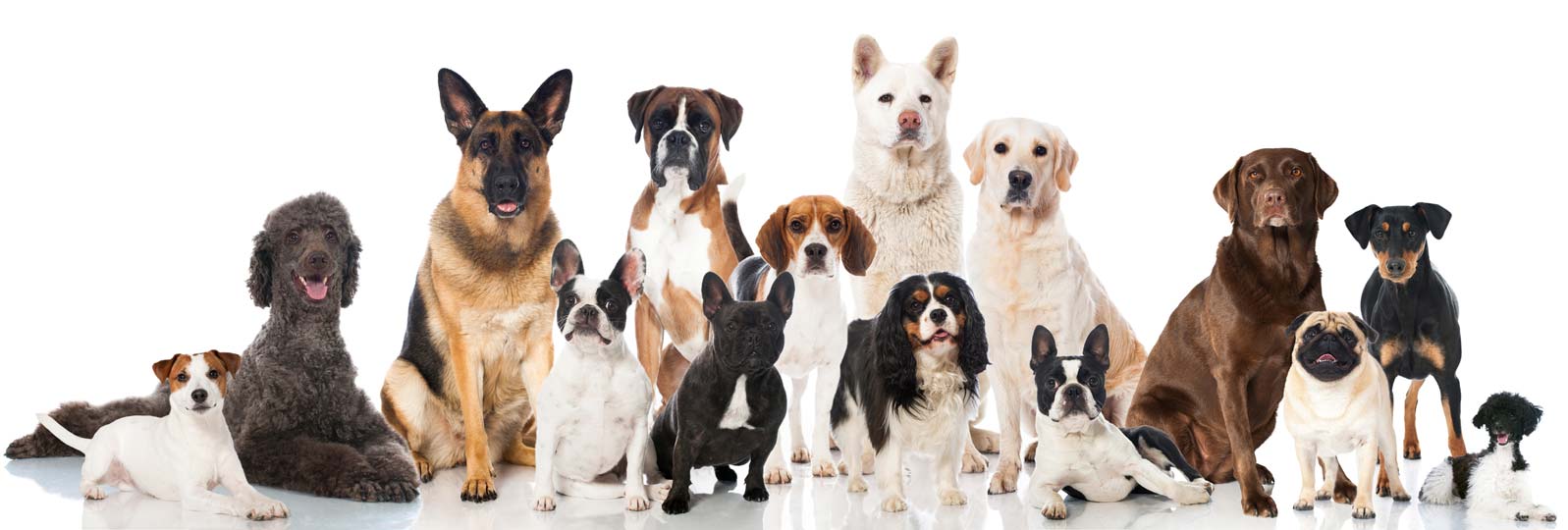Why Are There More Body Variations in Dogs Than Cats?

Have you ever noticed that there are wide variances in the body types, sizes, and characteristics of dogs but the same isn't true of cats? For example, there's a huge difference in the size and shape of a Chihuahua and an Irish wolfhound but not a big difference in the basic size and shape of a Persian and a Bengal.
Of course, there are different cat breeds with minor differences in facial structure, hair coat, and size, but nothing on the order of canine variety. Why is that?
What Causes Differences Between Breeds?
Genetic mutations cause differences between animals within a species, and some of those mutations die out while others thrive and create long-lasting changes in the species. In the case of dogs, humans interfered with evolution, breeding together dogs with mutations they liked to create many different breeds. The same thing happened with cats, but not to nearly the same extent as it did with dogs.
Dogs and Cats Have Different Jobs They Do for Humans
Dogs and cats have both lived with humans for thousands of years, and that's why we have been involved in breeding them to develop certain characteristics that could help us.
So why the big difference in dog breeds and smaller difference in cat breeds?
Dogs have performed many jobs for humans around the world in different areas and occupations. They can pull sleds, guard things and people, hunt or help hunt a variety of animals, and carry items around. When humans needed dogs to do a certain job, they bred them to accentuate the characteristics that helped them do it.
Cats, however, are more limited on the jobs they've done for humans. They have been companions and rodent hunters, keeping pests out of food supplies. For both of those jobs, their body size and shape is already perfect, so the changes humans have made through breeding cats have been mainly cosmetic.
The Dangers of Selective Breeding
The process of choosing a trait or traits to specifically breed for, to make them more pronounced in a dog or cat breed, does come with some dangers. Certain genes that help produce specific characteristics also include harmful mutations.
For instance, the gene that produces the adorable folded ears in Scottish fold cats may also affect their cartilage, resulting in a debilitating and painful condition called osteochondrodystrophy. Learn more here: "Scottish Fold Cats: An Interview with Fancy Cat."
You May Also Like These Articles:
Which Dog Breeds Shed the Least?
Good Small Breed Dogs for First Time Dog Owners: Slideshow
Most Popular Dog Breeds - Slideshow
Pros and Cons of Sharing a Bed with Your Dog
How to Help Your Dog Get a Better Grooming
How to Limit Pain for Your Dog
Disclaimer: This website is not intended to replace professional consultation, diagnosis, or treatment by a licensed veterinarian. If you require any veterinary related advice, contact your veterinarian promptly. Information at DogHealth.com is exclusively of a general reference nature. Do not disregard veterinary advice or delay treatment as a result of accessing information at this site. Just Answer is an external service not affiliated with DogHealth.com.
Notice: Ask-a-Vet is an affiliated service for those who wish to speak with a veterinary professional about their pet's specific condition. Initially, a bot will ask questions to determine the general nature of your concern. Then, you will be transferred to a human. There is a charge for the service if you choose to connect to a veterinarian. Ask-a-Vet is not manned by the staff or owners of DogHealth.com, and the advice given should not delay or replace a visit to your veterinarian.



